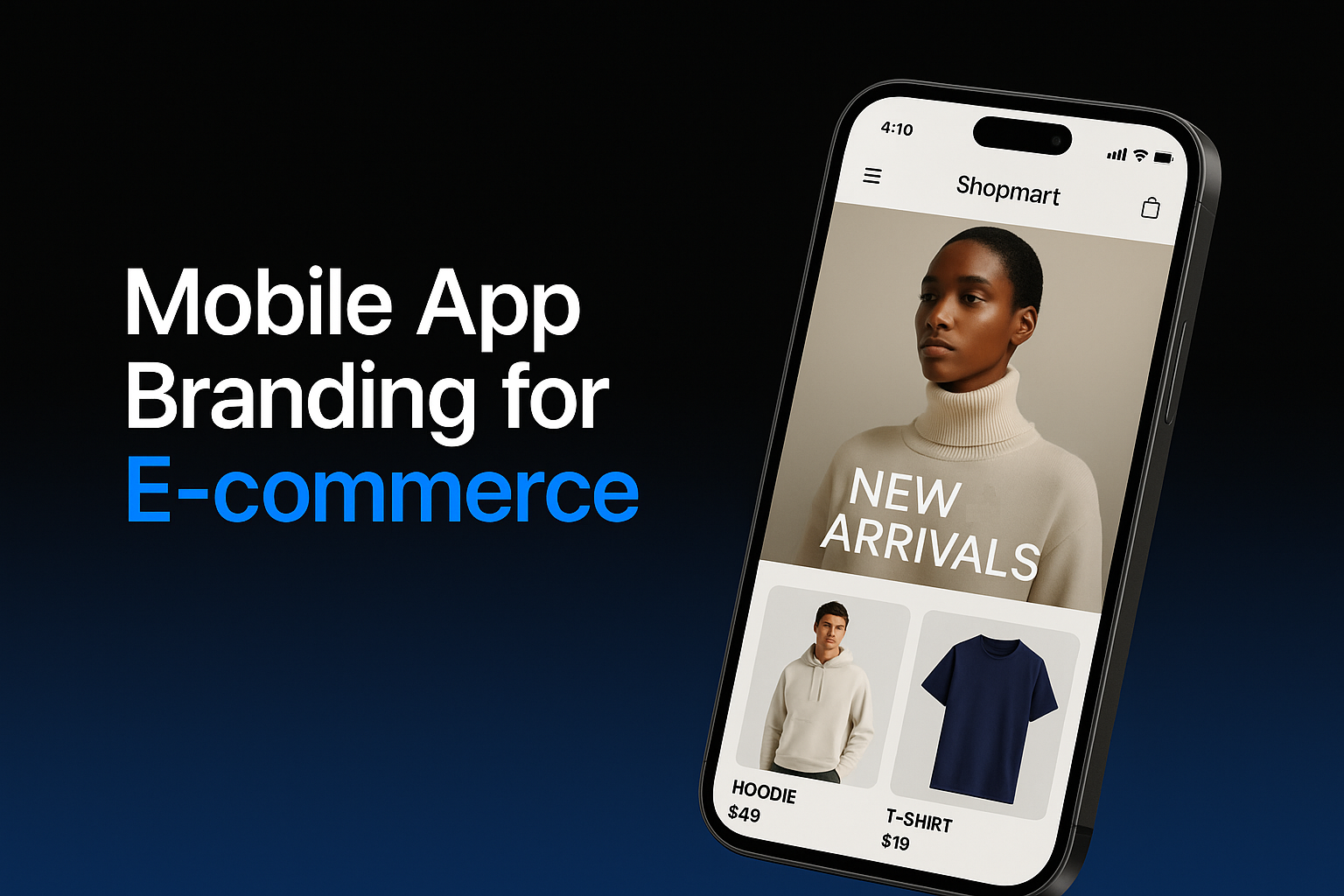Essential Guide to Mobile App Branding for E-Commerce Businesses
In today's competitive e-commerce landscape, launching a mobile app isn't just about providing another sales channel—it's about extending your brand experience to a platform where customers increasingly spend their time. However, simply replicating your product catalog in an app isn't enough. Your mobile app needs to embody your brand identity while delivering a seamless shopping experience.
Effective mobile app branding creates a cohesive experience across all customer touchpoints, reinforcing your brand values and positioning. When done right, it transforms your app from a mere shopping tool into a powerful brand asset that drives loyalty and conversions. For industry-specific considerations, check out our guide on developing industry-specific e-commerce strategies.

Why Mobile App Branding Matters for E-Commerce
Consumers interact with countless brands daily, making strong, consistent branding more critical than ever. Here's why investing in mobile app branding pays dividends:
1. Enhanced Brand Recognition and Recall
In a sea of apps competing for attention, consistent branding helps your customers instantly recognize your app. When your mobile experience aligns with your website and other channels, you reinforce brand recognition with every interaction.
2. Increased Trust and Credibility
Consistency breeds trust. When customers experience the same visual identity, tone, and quality across all touchpoints, it signals professionalism and reliability—critical factors in purchase decisions.
3. Improved User Experience
Thoughtful branding isn't just about aesthetics; it improves functionality. When users encounter familiar design patterns and visual cues from your website, they navigate your app more intuitively, reducing friction in the shopping journey.
4. Higher Conversion Rates
A branded app experience that aligns with your broader marketing reinforces your value proposition and builds emotional connections—both powerful drivers of conversion and customer lifetime value.
Key Elements of Effective Mobile App Branding
Creating a cohesive brand experience requires attention to several critical components:
1. App Icon and Splash Screen
Your app icon is often the first brand touchpoint on a user's device. It should be instantly recognizable while adhering to platform design guidelines. Similarly, your splash screen offers a valuable branding moment during app launch.
Implementation tip: Use a simplified version of your logo that remains recognizable at small sizes. Ensure your splash screen reinforces your brand identity while keeping load times brief.
2. Color Palette and Typography
Colors and fonts are fundamental brand identifiers that significantly impact user perception and experience.
Implementation tip: Taptool allows you to customize both primary and secondary colors in your app, ensuring perfect alignment with your brand guidelines. The platform also supports custom font uploads, enabling you to maintain typography consistency across all channels.
3. Visual Elements and Imagery
Product photography, illustrations, banners, and other visual elements should maintain a consistent style that reflects your brand personality.
Implementation tip: Develop a clear style guide for in-app imagery that matches your website aesthetic. Consider how images will appear on smaller screens when planning your visual approach.
4. Navigation and UI Components
The way users move through your app and interact with its elements should feel consistent with your website experience while optimizing for mobile contexts.
Implementation tip: Adapt your website's navigation patterns to mobile contexts rather than reinventing them entirely. Familiar patterns reduce cognitive load for customers who use both channels.
5. Tone and Messaging
Your brand voice should be consistent across all app content, from product descriptions to error messages.
Implementation tip: Create a content style guide specifically for app contexts, addressing the more concise nature of mobile interfaces while maintaining your brand's verbal identity.
How to Implement Consistent Branding in Your Mobile App
Follow these steps to ensure your mobile app delivers a cohesive brand experience:
1. Audit Your Existing Brand Assets
Before building your app, document your current brand elements: logo variations, color codes, typography, photography style, and voice. Identify which elements are most critical to maintain consistency.
2. Adapt for Mobile Contexts
Not every branding element will translate directly to mobile. Consider which aspects need adaptation for smaller screens, touch interfaces, and different user contexts.
For example, complex logo designs might need simplified versions for app icons, and typography may require adjustments for readability on mobile screens.
3. Customize Your App Experience
With Taptool, you can easily apply your brand identity to your mobile app through several key customization options:
- Store Logo Integration: Upload and position your logo to maintain consistent brand identity
- Typography Control: Select from curated font options or upload custom fonts that match your website
- Color Scheme Management: Apply your brand's primary and secondary colors throughout the app interface
- Visual Layout: Structure your app's presentation to align with your brand's visual hierarchy
Taptool's intuitive design tools allow you to make these customizations without coding knowledge, enabling perfect brand alignment without technical complexity.
4. Maintain Consistency Across Updates
Brand consistency is an ongoing commitment. Establish processes to ensure all app updates and new features align with your brand guidelines.
Common Mobile App Branding Mistakes to Avoid
Even well-established brands can fall into these common pitfalls:
1. Inconsistency Between Channels
Customers expect a unified experience. Significant differences between your website and app create confusion and diminish trust.
2. Prioritizing Trends Over Brand Identity
While staying current with design trends is important, don't compromise your established brand identity to chase fleeting styles.
3. Neglecting Platform Guidelines
Each mobile platform has specific design guidelines. Ignoring these can result in an app that feels foreign to users and may even face rejection from app stores.
4. Overlooking Performance Implications
Heavy branding elements like custom fonts and high-resolution images can impact app performance. Balance aesthetic considerations with technical constraints.
Conclusion: Brand Consistency Drives Mobile Commerce Success
Your mobile app represents a significant opportunity to strengthen your brand relationship with customers. By maintaining consistent branding across all touchpoints while optimizing for the mobile context, you create a seamless experience that builds trust and drives conversions.
Taptool makes implementing consistent branding straightforward with intuitive customization tools that require no technical expertise. The result is a branded mobile shopping experience that feels like a natural extension of your e-commerce store.
Ready to create a perfectly branded mobile app experience? See our App Branding Guide and learn how Taptool can help you extend your brand to mobile. Once your app is branded perfectly, learn how to effectively promote it with our guide to effective mobile app promotion.
